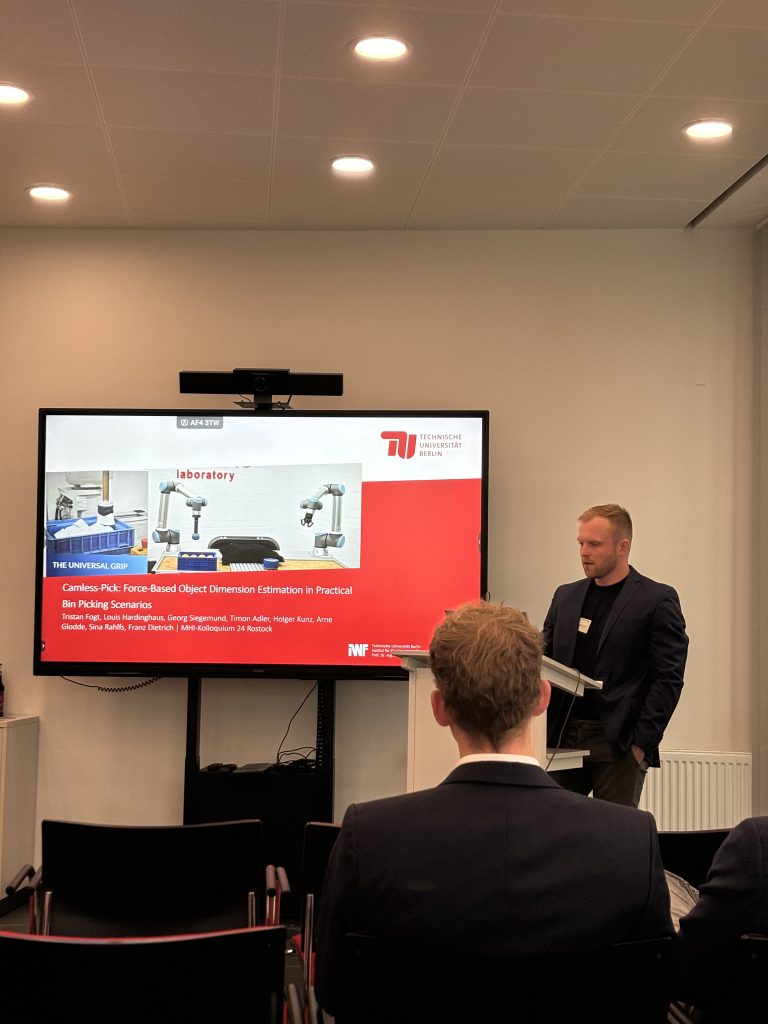Last weekend, I had the privilege of presenting my paper, titled „A Tactile Approach to Bin Picking: Estimating Object Dimensions Without Cameras,“ at the MHI Colloquium in Rostock, hosted by the Fraunhofer Institute for Large Structures in Production Technology (IGP). This event was an excellent platform to discuss innovative ideas and solutions with leading experts in robotics and industrial automation.
The Challenge
Bin picking has long been considered a cornerstone challenge in industrial robotics. Traditional approaches rely heavily on vision-based systems to detect and grasp objects. However, such systems often face limitations in low-light environments, reflective surfaces, or when objects are partially obscured. My research explores an alternative: a tactile-based solution that does not depend on cameras.
The Core Innovation
This paper introduces a method to estimate object dimensions in bin picking scenarios using only force and torque data. The approach enhances the adaptability and robustness of camera-less bin-picking systems by allowing robots to:
- Detect Object Characteristics: Infer object dimensions through tactile feedback during interaction.
- Adjust Handling in Real-Time: Use this information to improve grasping accuracy and placement.
By shifting from visual to tactile inputs, the system reduces reliance on ideal lighting and visual clarity, opening up possibilities for more flexible and cost-effective solutions.
Validation and Results
To validate this approach, we conducted experiments with real-world objects, demonstrating:
- Dimension predictions within an 8-18% margin of error.
- Reliable performance across diverse object shapes and materials.
- Improved system resilience in scenarios where vision systems struggle.
These results highlight the potential of tactile-based techniques to complement or replace camera-based methods in certain applications.
Reflections on the MHI Colloquium
The feedback and discussions at the MHI Colloquium were immensely valuable. Attendees were particularly intrigued by the potential to apply this approach in areas such as:
- Automated Warehousing: For environments with low visibility.
- Collaborative Robotics: Where safety and adaptability are key.
- Manufacturing: For handling challenging materials and objects.
The event also provided an opportunity to connect with fellow researchers and industry professionals who are driving innovation in robotics.
Looking Ahead
This research is just the beginning. I plan to further refine the tactile approach and explore its integration with reinforcement learning techniques to enhance object recognition and adaptability. These advancements could lead to even more robust solutions for industrial automation.
If you’re interested in this research or potential collaborations, feel free to reach out through my contact page.

